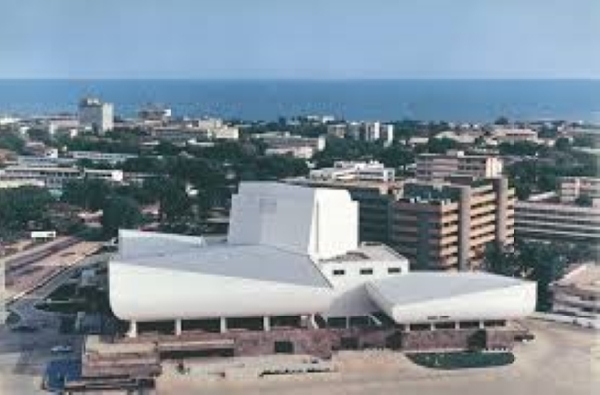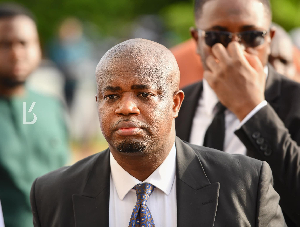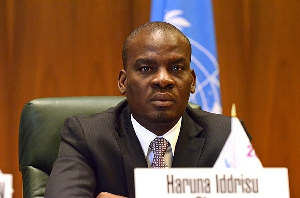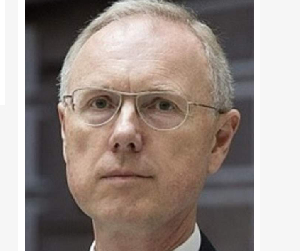- Home - Entertainment
- Lifestyle News
- Entertainment Videos | TV
- Year In Review
- Music News
- Entertainers
- Entertainment Archive
- Entertainment Photos
- Jokes
- Entertainment Headlines
- Ameyaw Debrah
- Brown GH
- Celebrities Buzz
- GH Base
- Ghana Celebrities
- Gh Gossip
- GH Page
- GH Splash
- Hot Gossip GH
- YEN

Entertainment of Tuesday, 12 March 2024
Source: www.ghanaweb.com
Sankofa Series: The edifice where creative dreams become a reality
If tasked with creating a list of the top 5 national monuments in the country, the National Theatre of Ghana would likely secure a spot on that list. Since its establishment in the early 1990s, no other building in Ghana can boast of being a beacon of creativity, culture, and collective imagination.
Ask any creatives you know, and they will tell you their memories of the National Theatre. Stories of passion, sweat, tears and smiles, all in the relentless pursuit of artistic excellence.
In this Sankofa Series, we delve into the origins, history and significance of this iconic institution.
In 1989, the governments of Ghana and China signed an agreement to construct the National Theatre Complex.
The project aimed to create a hub for artistic expression, a place where drama, dance, music, and screenplays would flourish. On March 8, 1990, work commenced on the building.
On December 16, 1992, the National Theatre was finally completed for $20 million. The building covered 11,896 square meters and its exterior was made up of blended reinforced concrete, burnt bricks, polished granite, and mosaic tiles - complete with a three-tier water fountain at the frontage.
On December 30, 1992, the National Theatre was opened to the public; a symbol of artistic flow and vitality.
The National Theatre, however, transcends mere bricks and mortar. The building is a blend of Brutalist architecture, Adinkra symbols, and vibrant echo chambers.
The National Theatre embodies the soul of Ghanaian theatre and has birthed and nurtured masterpieces, from the retelling of Ghanaian classics to contemporary dramas, it nurtures playwrights, actors, and directors, shaping the theatrical landscape.
On its stage, joy, sorrows, and struggles find expression from ideas birthed in the minds of creatives. Each production on that stage serves as a mirror through which society examines itself.
From the “Concert Party” shows to dozens of productions by the renowned Uncle Ebo Whyte to the Ghana Music Awards, “Night of 1001 Laughs”, “National Math and Science Quiz”, “The SpringBoard Road Show”, “Ghana Meets Naija” and various other shows and events, the National Theatre stands in the middle of memories of smiles, tears, enlightenment and hope.
By offering diverse productions, workshops, and educational programs, the National Theatre democratizes both art and education.
Its inviting posture serves as a haven for both seasoned theatregoers and curious novices alike to partake in the magic of art.
But the National Theatre is not without its shortfalls. Years of use have opened up cracks in its magnificent pose.

Various stakeholders including playwrights, theatre-goers, journalists and even staff of the theatre have raised concerns of a dilapidation of the structure.
While these concerns are still being addressed, the theatre still plays home to various shows, most notably, George Quaye’s rendition of “The Gods Are Not To Blame” - arguably one of the biggest plays in Ghana.
In all, The National Theatre is a testament to the power of creativity, passion, hard work and the belief that dreams do come through.
As its curtains rise and fall, it weaves stories that resonate across generations.
ID/BB
Click here to follow the GhanaWeb Entertainment WhatsApp channel
Ghana’s leading digital news platform, GhanaWeb, in conjunction with the Korle-Bu Teaching Hospital, is embarking on an aggressive campaign which is geared towards ensuring that parliament passes comprehensive legislation to guide organ harvesting, organ donation, and organ transplantation in the country.











